Audi's 2014 Urban Future Award paves the way to smooth city driving
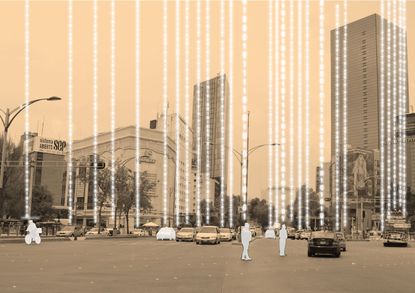
Like many big car companies, Audi is spending considerable amounts of time exploring how to make its products gel better with the urban environment. Cars have a contentious relationship with cities, but it's obviously in the best interests of a car maker to ensure that the two coexist in sweet, profitable harmony for many years to come.
At the heart of their efforts is Audi's Urban Future Initiative, a heavily branded venture that sees invited teams of architects, designers, planners and other professionals suggest new ways of dealing with the myriad problems of 'urban mobility'. Audi launches its own technology-driven solutions alongside stylish renders and slick CGI, creating a virtuous circle of innovation.
That's the idea. It works because technology is one of Audi's brand identifiers. Ever since a bright spark at a (British) ad agency minted the phrase 'Vorsprung durch Technik' in the early 1980s, the company has mostly lived up to the image of a technology-driven innovator. In that time it has also marched steadily upmarket and is now one of the world's most desirable premium brands. From here, there is genuine potential for innovating beyond the ream of car-making and CEO Rupert Stadler set up the Urban Future Initiative soon after his appointment in 2010 as a marketing-friendly think tank.
For 2014, four teams took on the challenge of four very different cities: Berlin, Seoul, Boston and Mexico City. Their exact goal could be loosely described as 'explore how cars can continue to play a role in the future megacity'. Although plenty of august commentators would fundamentally disagree with the premise, this is not what a car maker wants to hear. Instead, we were treated to four densely argued research documents that, variously, sifted through data to calculate the best options for a particular journey (Boston and Mexico City), transformed the car into an almost architectural object that expresses and promotes social desire, status and interests (Seoul) and a far-reaching plan to transform abandoned city infrastructure into a quasi-autonomous personal transportation system (Berlin).
Each team based its ideas in a concrete reality, although the tether didn't prevent them from flying off into fanciful realms. The winner – and recipient of €100,000 – was the Mexican team, consisting of architect Jose Castillo, analyst Carlos Gershenson and think tank-leader Gabriella Gomez-Mont. Their proposal triumphed largely because Mexico City – a sprawling metropolis of 20 million – has barely scratched the surface of its congestion issues. Surveys and raw data are desperately thin on the ground, so the Audi-sponsored initiative has strong potential for helping planners figure out how to cut the huge social, economic and environmental cost of traffic.
The Initiative has previously highlighted the work of J Mayer H and Bjarke Ingels, implying that stylish visuals typically triumph over pragmatic data-crunching. Mexico City's victory bucked this trend, implying a new maturity in the company's desire to tackle the way its products interact with the world around them. Autonomous driving is, of course, a hot-button topic in the motor industry. Audi took the time to demo its latest innovation after the awards ceremony. Traffic Light Assist might sound prosaic, but getting it to work typifies the hugely complicated data maze that has to be negotiated every step of the way.
TLA links your car into the city's traffic system. It then feeds information about the approaching intersection to a dashboard display, giving you the optimum driving speed for reaching the light before it changes, or so it'll change just as you arrive. If you get caught at a red, it'll cut the engine and count down to when the light goes green, firing up five seconds before it's time to go. In practice it works seamlessly, though fewer than half of Berlin's 2,000+ lights are linked in.
The future of cars in cities is likely to be the piecemeal introduction of countless little systems like this, each requiring the synchronisation of vast swathes of realtime data. Audi isn't glossing over the challenge. But it knows full well that being an innovator means it will set the standards that others will have to follow.

Mexico City: Mexico's team, consisting of architect Jose Castillo, analyst Carlos Gershenson and think tank-leader Gabriella Gomez-Mont, won €100,000 for its proposal, which included a data-heavy app design

Mexico City: Surveys and raw data are desperately thin on the ground in Mexico, so the Audi-sponsored initiative has strong potential for helping planners figure out how to cut the huge social, economic and environmental cost of traffic

Mexico City: The proposal triumphed largely because Mexico City – a sprawling metropolis of 20 million – has barely scratched the surface of its congestion issues
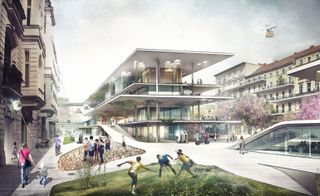
Berlin: The team representing Berlin proposed a far-reaching plan to transform abandoned city infrastructure into a quasi-autonomous personal transportation system

Berlin: The German team aimed to show how a newly developed district abandoned by TXL Airport can be connected to the German capital city. Pictured here is a 'route station'
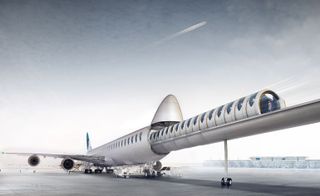
Berlin: A 'multimodal' transportation concept with flywheels

Berlin: A digital rendering of Berlin's 'flyaway bypass'

Boston: Boston's 'piloted parking' scheme would use 50 per cent less space than current parking schemes

Boston: The dashboard quantifies future ecological impacts from emissions
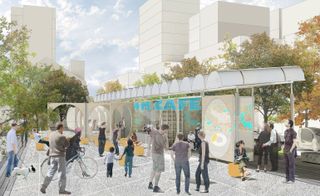
Boston: A 4M hub and cafe would provide real-time transport information

Seoul: Team Seoul transforms the car into a 'traveling interface to the city', a machine for virtual experience. Travelling in traffic along the Yangjae Stream will resemble a visit to a theme park, with music and performances
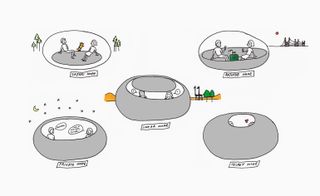
Seoul: The team transformed the car into an almost architectural object that expresses and promotes social desire, status and interests
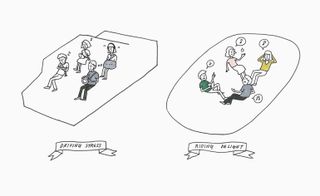
Seoul: Different entertainment modes would transform the car from a stressful device to a stress-free environment
Wallpaper* Newsletter
Receive our daily digest of inspiration, escapism and design stories from around the world direct to your inbox
Jonathan Bell has written for Wallpaper* magazine since 1999, covering everything from architecture and transport design to books, tech and graphic design. He is now the magazine’s Transport and Technology Editor. Jonathan has written and edited 15 books, including Concept Car Design, 21st Century House, and The New Modern House. He is also the host of Wallpaper’s first podcast.
-
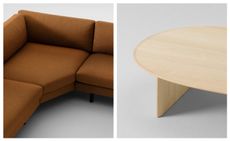 Maruni's new collections combine Japanese skills with humble functionality
Maruni's new collections combine Japanese skills with humble functionalityPresented at Salone del Mobile 2024, Maruni's new collections include furniture by the brand's art director Naoto Fukasawa as well as Cecilie Manz and Jasper Morrison
By Danielle Demetriou Published
-
 Neuraé: meet the new French skincare brand that can change your emotions
Neuraé: meet the new French skincare brand that can change your emotionsNeuraé is a new neuroscientific skincare brand harnessing the connection between the skin and the brain
By Hannah Tindle Published
-
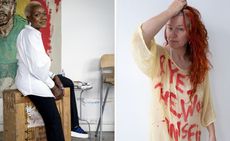 Meet the Turner Prize 2024 shortlisted artists
Meet the Turner Prize 2024 shortlisted artistsThe Turner Prize 2024 shortlisted artists are Pio Abad, Claudette Johnson, Jasleen Kaur and Delaine Le Bas
By Hannah Silver Published
-
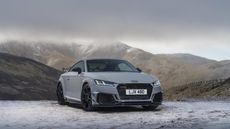 Farewell to the Audi TT, a design icon that evolved with the automotive landscape
Farewell to the Audi TT, a design icon that evolved with the automotive landscapeFor over 25 years, the Audi TT has been synonymous with the brand, a modern machine that initially favoured style over sport. The final editions are very different beasts to the original
By Jonathan Bell Published
-
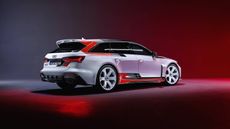 Audi RS6 Avant GT is an estate car that thinks it belongs on the track
Audi RS6 Avant GT is an estate car that thinks it belongs on the trackWith the Audi RS6 Avant GT limited-edition supercar, Audi Sport has gone all-out to create the ultimate hyper-estate
By Jonathan Bell Published
-
 Year in review: the top 10 cars of 2023, as selected by Wallpaper’s Jonathan Bell
Year in review: the top 10 cars of 2023, as selected by Wallpaper’s Jonathan BellWhat were the best four-wheeled offerings of 2023? Transport editor Jonathan Bell takes us through the year’s most intriguing automobiles
By Jonathan Bell Published
-
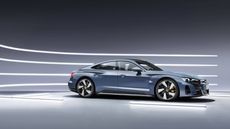 Audi e-tron GT quattro still pushes all the right buttons. But what happens next?
Audi e-tron GT quattro still pushes all the right buttons. But what happens next?Life behind the wheel of Audi’s elegant electric GT, plus a short history of the company’s e-tron series, from concept through to production
By Jonathan Bell Published
-
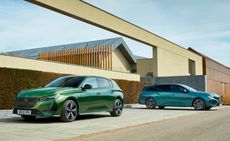 Peugeot’s sparky 308 gets hybrid power and handsome lines
Peugeot’s sparky 308 gets hybrid power and handsome linesThe Peugeot 308 proves that mass-market design needn’t be dull, blending hybrid power with sharp lines and excellent detailing
By Jonathan Bell Published
-
 BMW Motorrad brings out the big guns for its newest cruisers
BMW Motorrad brings out the big guns for its newest cruisersBMW Motorrad R 18 Bagger and Transcontinental set the tone for high-voltage cruising with a brand collaboration with speaker specialist Marshall
By George Chapman Last updated
-
 Dacia’s new Manifesto concept is a true outdoor utility vehicle
Dacia’s new Manifesto concept is a true outdoor utility vehicleUtilitarian auto brand Dacia sets a bold new agenda with its Manifesto, a concept car pitched at the active outdoor market
By Jonathan Bell Last updated
-
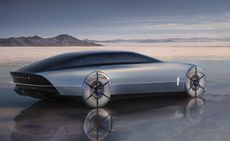 The sun sets on traditional supercars at California’s Monterey Car Week
The sun sets on traditional supercars at California’s Monterey Car WeekMonterey Car Week, the world’s most prestigious car gathering, is showcasing ever-more extravagant special editions, coachbuilt cars and all-new electric concepts. Here are seven key machines from 2022
By Rory FH Smith Last updated